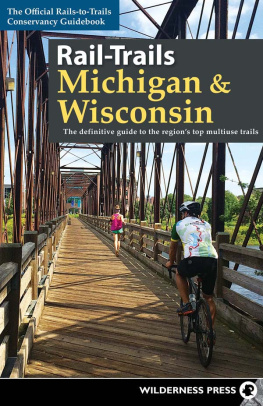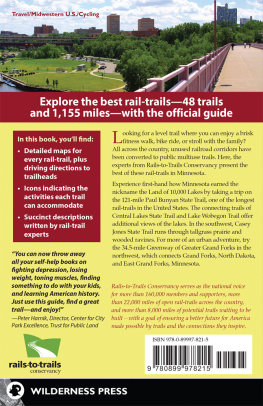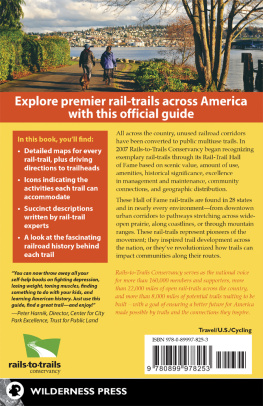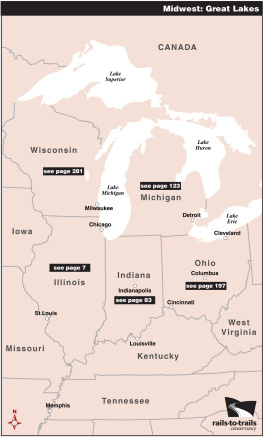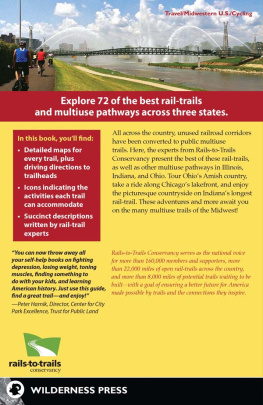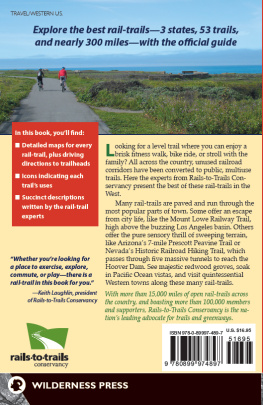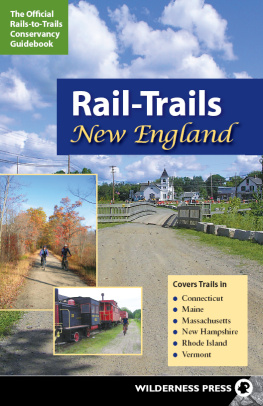Best Rail Trails
PACIFIC NORTHWEST
Help Us Keep This Guide Up to Date
Every effort has been made by the author and editors to make this guide as accurate and useful as possible. However, many things can change after a guide is publishedregulations change, techniques evolve, facilities come under new management, etc.
We would appreciate hearing from you concerning your experiences with this guide and how you feel it could be improved and kept up to date. While we may not be able to respond to all comments and suggestions, well take them to heart, and well also make certain to share them with the author. Please send your comments and suggestions to the following address:
Globe Pequot Press
Reader Response/Editorial Department
246 Goose Lane
Guilford, CT 06437
Or you may e-mail us at: editorial@GlobePequot.com
Thanks for your input, and happy trails!

FALCON GUIDES
Distributed by National Book Network
Copyright 2001, 2009, 2015 by Rowman & Littlefield
ALL RIGHTS RESERVED. No part of this book may be reproduced or transmitted in any form by any means, electronic or mechanical, including photocopying and recording, or by any information storage and retrieval system, except as may be expressly permitted in writing from the publisher.
FalconGuides is an imprint of Rowman & Littlefield.
Falcon, FalconGuides, and Outfit Your Mind are registered trademarks of Rowman & Littlefield.
Photos by Natalie Bartley unless otherwise noted
Maps: Daniel Lloyd Rowman & Littlefield
Library of Congress Cataloging-in-Publication data is available on file.
ISBN 978-0-7627-9706-6 (paperback)
ISBN 978-1-4930-1478-1 (ebook)
The author and Rowman & Littlefield assume no liability for accidents happening to, or injuries sustained by, readers who engage in the activities described in this book.
ACKNOWLEDGMENTS
Hundreds of heartfelt thanks go to dozens of people who willingly gave their time to bring this books updated version to reality. Trail managers in all three states unselfishly agreed to discuss and review details regarding their trails, putting aside their own deadlines to do so. For example, rangers from the field such as Blair Whiteman at L. L. Stub Stewart State Park and Brian Lehtola at Hat Rock State Park contributed in-depth reviews of their trails. Bicycle shop owners such as Nick Fuller of Paradise Creek Bicycles filled me in on trail details. Phil Edholm, president/CEO of Lookout Pass Ski & Recreation Area, helped refine a snowbound trailheads GPS coordinates. Various nonprofit trail support organizers made valuable contributions, including Glenn Glover and the staff of the Evergreen Mountain Bike Alliance and Shirley Atteberry and Pattie Heldt of the Friends of the Weiser River Trail. Chambers of commerce and tourism agency experts such as Annette Bagley with Bellingham/Whatcom County Tourism expanded on local features. To all the other trail consultants, please forgive me if I have not included you; you are in my thoughts, and I offer you gratitude for your time and interest regarding this project.
Love, light, and laughter go to my family and friends, including Dave Lindsay, Nora Bartley, Nancy Lee, Katja Casson, and Ellie Johnson. A big thank you is due to David Legere, acquisitions editor at Globe Pequot/FalconGuides, for his understanding and support during the book preparation process. Id also like to thank production editor, Staci Zacharski; copyeditor, Paulette Baker; and cartographer, Daniel Lloyd. Lastly, kudos to Mia Barbera, the author of first edition regarding the Pacific Northwest rail trails in Washington and Oregon. Its been my pleasure to build the book by retracing her prior work, adding Idaho trails, and updating information for this edition regarding the ever-expanding network of rail trails in the Pacific Northwest.
INTRODUCTION
The rail trails of Washington, Oregon, and Idaho provide scenic refuge, education, history, play, and physical adventure. Pick your trails and enjoy the surrounding cities, towns, and landscapes.
Trails described in these pages range from a 12-foot-wide paved path to a narrow, rugged, dirt singletrack. Youll look out over an unobstructed view of the Columbia River, up to surrounding desert canyon walls, ahead through dense evergreen forest, or down upon neighborhood homes. Skaters, cyclists, equestrians, anglers, walkers, runners, skiers, snowshoers, and strollers join together to get fit, get relaxed, get together, or get to work in these linear parks. The trails skirt wineries, dams, cultural centers, waterfalls, old mines, rivers, lakes, fine dining, breweries, and the ocean.
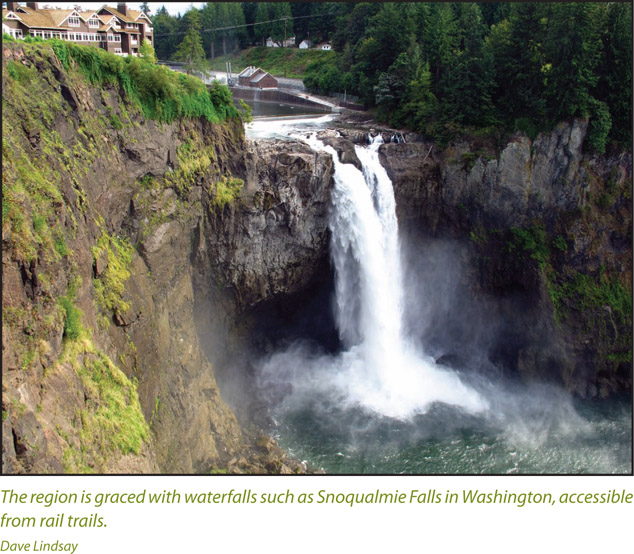
A Bit of Pacific Northwest Rail History
The Pacific Northwest is separated east from west by the Cascade Mountains. Agriculture built the east, where youll find distinct seasons and striking rock formations. Logging dominated the temperate western side, which features lush forests and interesting urban centers.
Before the railroad reached them, Washington, Oregon, and Idaho were islands, their geographic isolation restricting trade. The story of how the railroad got here fills volumes. Territorial and financial politics, bankruptcy, buyouts, personal glory, personal breakdown, and financial maneuvering paint as chaotic and colorful a picture as youll find in any chunk of history.
Simply getting to the mountain passes in winter to scope out a railroad route left engineers fighting for their lives. Even after the tracks were built, traveling over passes, below rock cliffs, above rivers, and through tunnels put rail passengers at risk of smoke asphyxiation and avalanches of snow and rock. In fact, the worst disaster in railroad history played out on Stevens Pass in 1910. A heavy snowstorm stopped one train on the tracks. After the frightened passengers watched rockslides and collapsing trees for eight days, an avalanche shoved the railcars off the track into the valley below. Ninety-six people lost their lives.
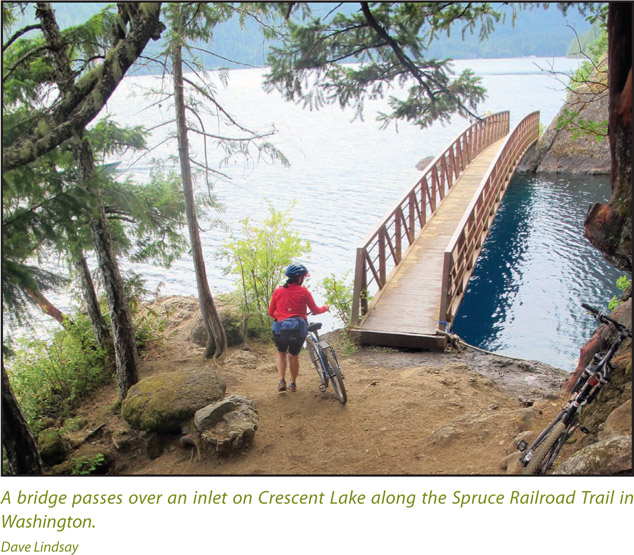
In 1850 railroads were experimental; few lines in the country were more than 150 miles long. In 1851 the first tracks were set down in the Pacific Northwesta crude 6-mile portage line built alongside the Cascades Rapids on the Washington side of the Columbia River. The train was not powered by an engine; instead, the flatcars were hauled by mules. The first steam train arrived in 1862. By 1863, 19 miles of track had been laid in Oregon and 6 in Washington, all beside the Columbia River. Because the rapids were impassable by steamboats on this important inland water route, railroad portages picked up each load and dropped it off at a ship on the other side of the turbulent waters. The next set of tracks was built over the next decade to serve the agricultural Willamette Valley in Oregon.
Meanwhile, in Idaho railroad service first arrived in 1874 in the southeastern part of the state. Another boost to service in the Pacific Northwest was the completion of the Oregon Short Line across southern Idaho in 1884. Known as an outlet for the Union Pacific Railroad, it went through the Snake River Valley in Idaho and on to Portland, Oregon.


